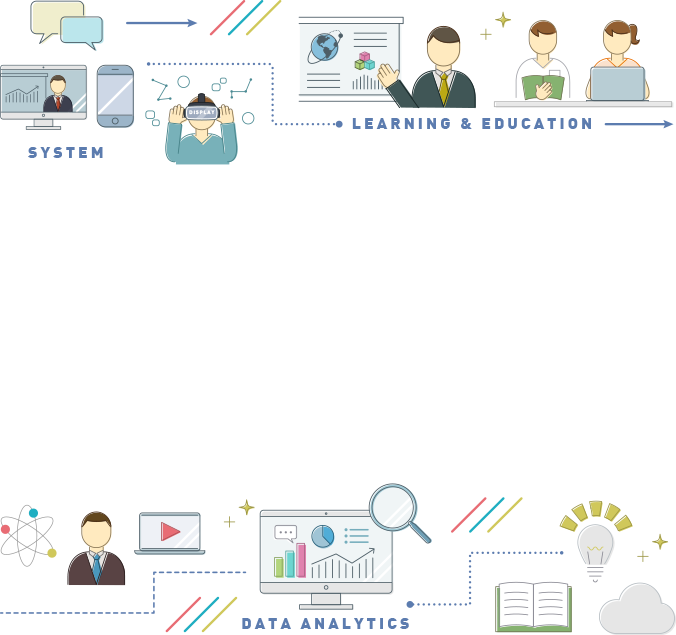I’m Tang Li, master student at Yamada Lab.
I would like to introduce the paper for this English Literature Seminar.
The paper is about the combination of embodied learning and VR in the field of education in 2023. In this research, VR technology provides a platform to embody learning theory, but few studies utilize VR technology and are based on embodied learning theory. Since my research seeks to gain a deeper understanding of approaches that combine VR technology and embodied learning theory, I believe this paper will serve as a reference and provide new perspectives from which to evaluate my research.
Title:Virtual reality and embodied learning for improving letter-sound knowledge and attentional control in preschool children: A study protocol.
Journal:Computers & Education: X Reality, 2, 100019.
Author:Henriksen, A. H., Topor, M. K., Hansen, R. A., Damsgaard, L., Nielsen, A. M. V., Wulff-Abramsson, A., & Wienecke, J.
Year of publication:2023
In recent years, the importance of children’s reading comprehension skills has been increasingly recognized. Difficult spelling and reading comprehension skills not only affect children’s academic performance, but can also affect their future professional lives. Therefore, it is considered that reading comprehension skills should be developed as early as possible.
Research on embodied learning suggests that physical movement can enhance cognitive function and, consequently, learning effectiveness. In particular, body movements have an important impact on attention, and learning that takes place through body movements can improve children’s reading comprehension. Meanwhile, technological advances have made possible new means of educational intervention, particularly virtual reality (VR). This allows more children to focus on their education and deepen their understanding. This is a great opportunity, especially for children with learning difficulties.
This study will investigate how VR technology can be used as an embodied learning tool to improve children’s letter and phonemic knowledge and potentially improve their literacy skills. Participants in this study will be 6-7 year old children, each group will be divided into two intervention groups (i.e., a VR group and a mirror group) and a control group consisting of at least 30 students.
In the VR group, participants wear VR equipment and watch their own avatars perform activities. They then perform whole-body movements associated with letters and phonemes. In the mirror group, participants watch images of themselves in a mirror and perform whole-body movements associated with letters and phonemes. Participants in the control group, on the other hand, continue to participate in the regular educational activities of their teachers, do not wear VR equipment, and do not perform whole-body movements.
Unfortunately, this study is still in the protocol phase. Therefore, the discussion here is not based on experimental results, but rather on the possibilities and challenges of VR technology in an educational context.
Specifically, the combination of VR technology and embodied learning has the potential to not only improve learning outcomes, but also draw children into new educational experiences. It is important to note, however, that at this point in time, children are only providing insight into the immediate effects of VR use on attentional control and its potential to immediately enhance letter and sound knowledge, and its long-term effects are yet to be elucidated. Thus, research in this area is still in its infancy, and we hope that future progress will yield more useful information.
In my opinion, this paper does not provide specific experimental results or definitive conclusions, but is merely a research protocol. However, I find its research positioning and the prior studies cited to be very beneficial to my research. For example, it provides evidence of how VR technology relates to embodied learning and indirectly suggests the need to combine VR technology with embodied learning theory. It is also stated that the immersive nature of VR and the learner’s agency can enhance the learner’s attention span and positively impact learning. I believe these perspectives provide credible support for my research.
However, the paper leaves several questions unanswered. For example, the paper suggests that there be three groups in the experimental setting: a VR group, a mirror group, and a control group. Here, both the VR group and the mirror group need to have an element of learning words while performing the movements while looking in the mirror. However, since there is no specific explanation in the paper, it is not clear what the difference between the VR and mirror groups would be other than that one group would take place in the virtual world and the other in the real world. There may be many possibilities for this. For example, in the VR group, it is proposed that the immersive experience that VR provides successfully prevents outside interference, but children may be influenced by the VR device and may have difficulty focusing their attention due to their curiosity about the virtual world. On the other hand, there is no special explanation for the mirror group environment either; for example, if the mirror group environment is quiet enough, or if the interference does not affect the children sufficiently to focus their attention, the advantage of attentional control in the VR environment may not be confirmed.
Also, it is not clearly stated what specific activities the “whole body movement” in the experimental design in this paper refers to. Furthermore, we still do not understand the extent to which the literacy learning that is envisioned to be supported here is meant. This is because while the study appears to focus primarily on word reading and writing skills, it does not address the full range of literacy (reading, writing, comprehension, and contextual interpretation). Therefore, it is not yet clear to what extent the proposed system can contribute to literacy learning. Finally, I do not speak Danish, but from my perspective, not all words need to be learned based on embodied learning theory. Therefore, I feel that the scope of application of embodied learning is not clear within this study.
This study suggests that the combination of VR and embodied learning may be a promising approach in the field of education. Future research will reveal more specific benefits and optimal application methods. Interest in and commitment to combining VR and embodied learning is becoming increasingly important for the future of education. It is hoped that future research and practice will reveal more specific benefits and optimal application methods, and develop new educational methods to maximize learning outcomes for students.







